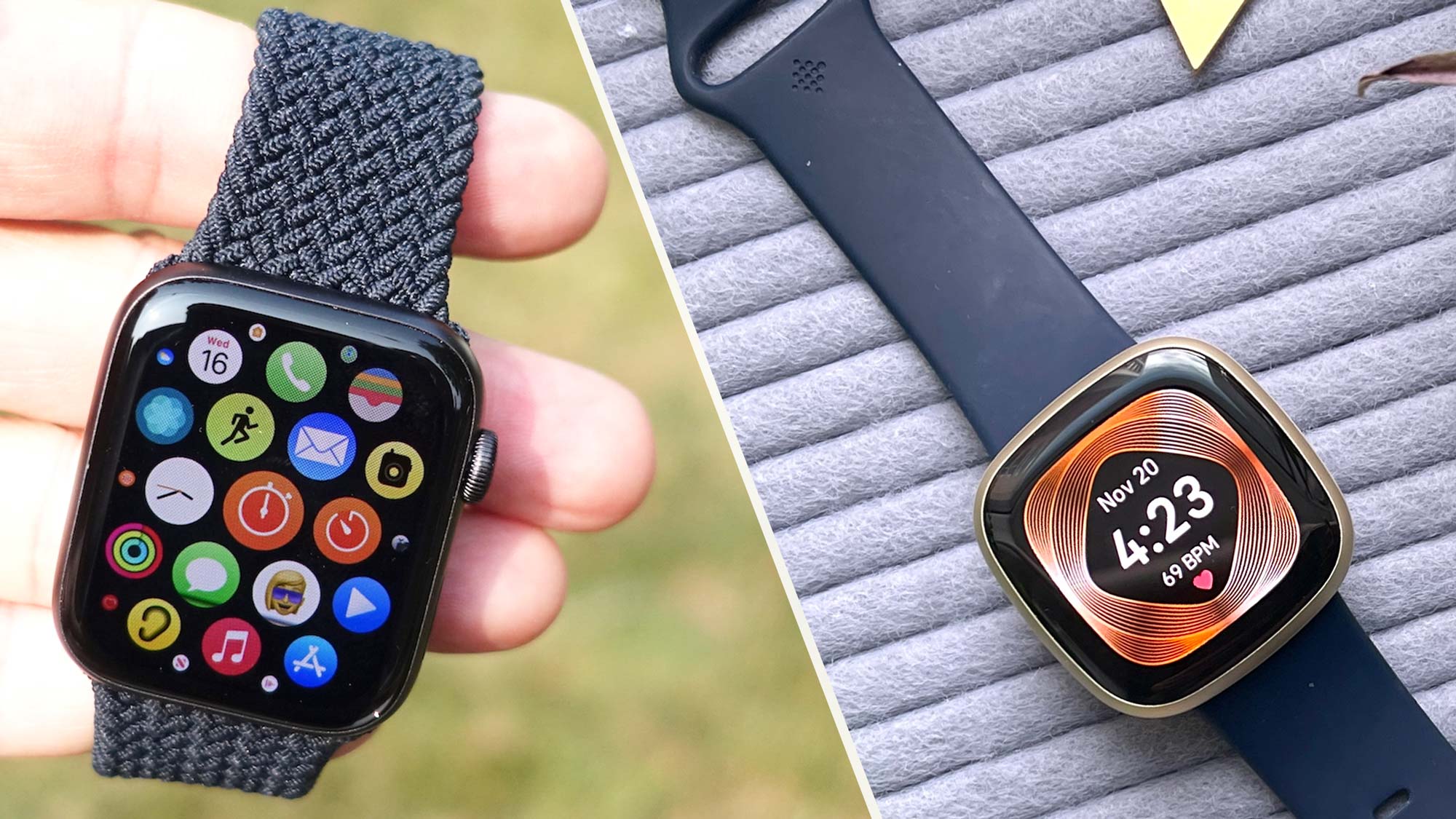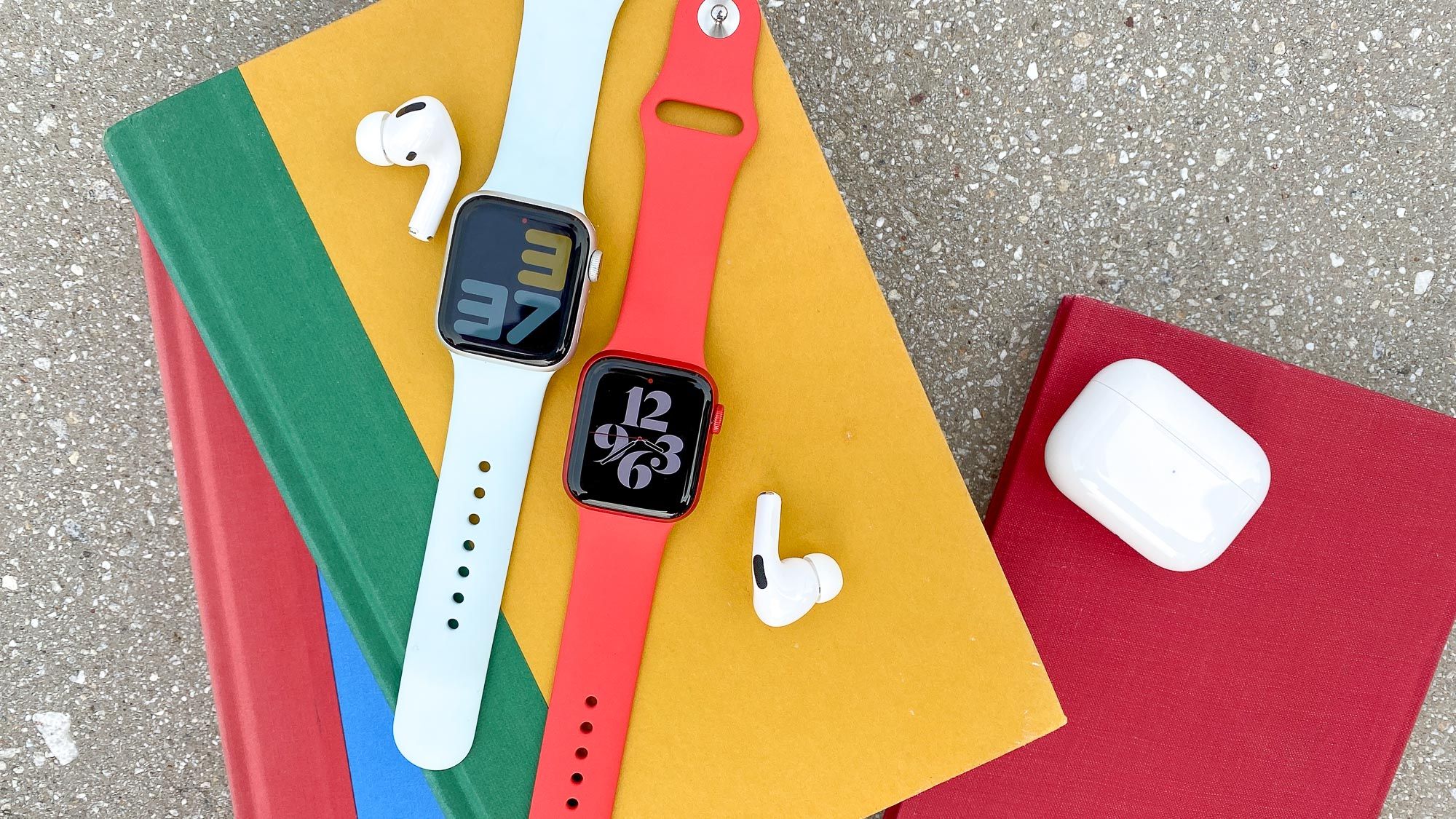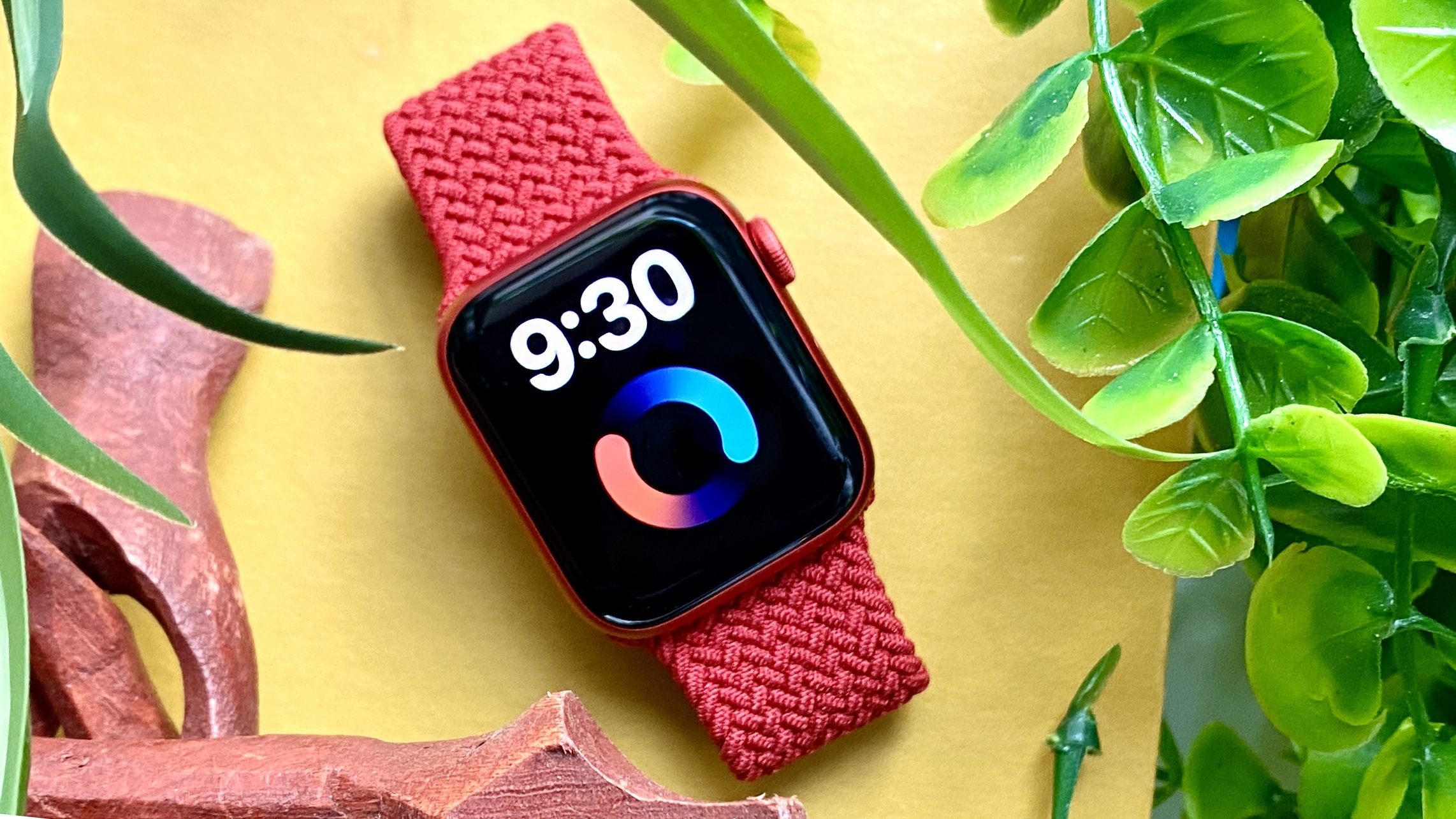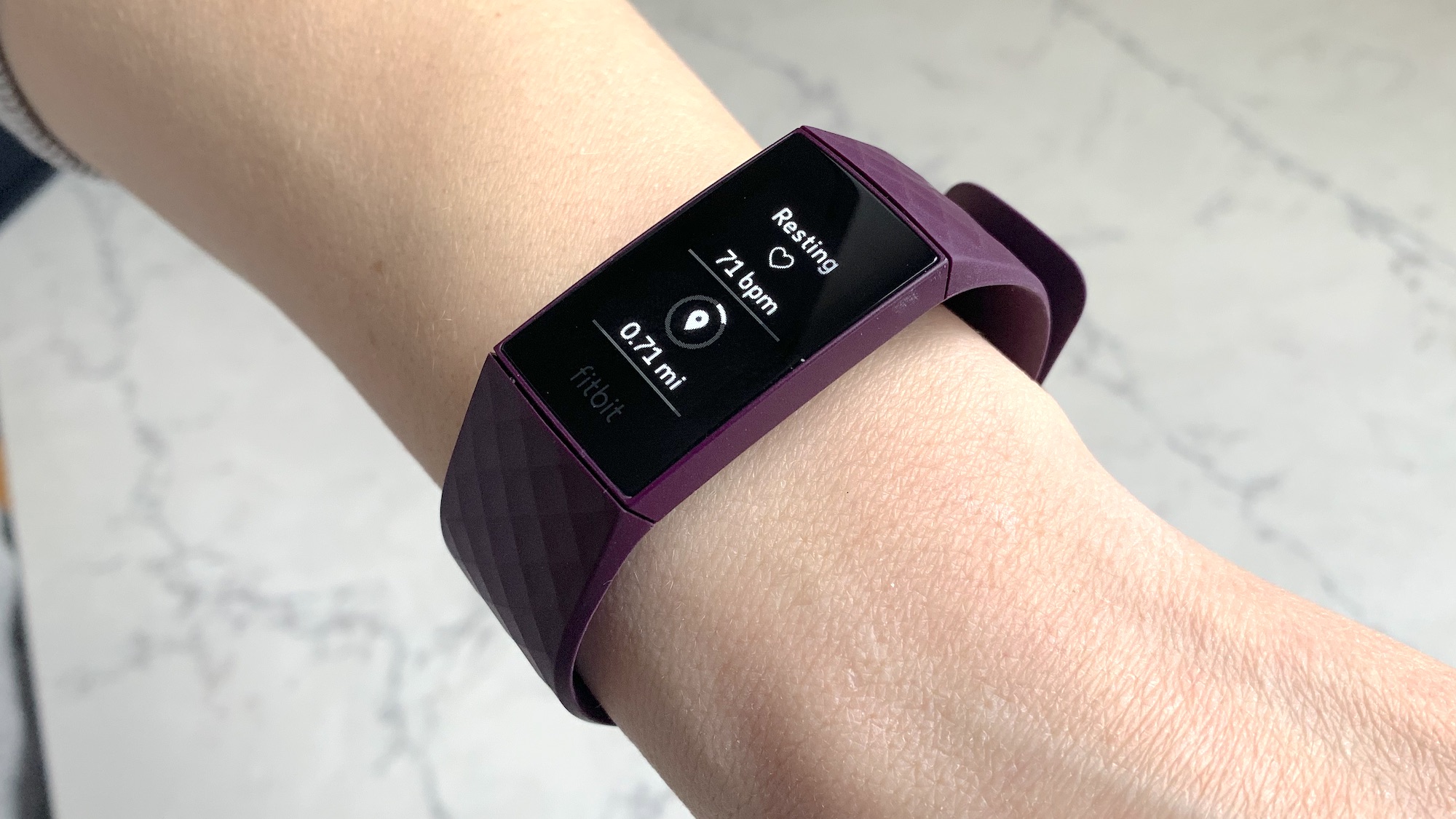Apple Watch vs. Fitbit: Which smartwatch brand should you buy?
How to decide whether Apple Watch vs. Fitbit is better for you

Apple Watch vs. Fitbit is a common predicament for first-time wearable users. Do you get Apple’s ultra-popular smartwatch or do opt for one of Fitbit’s fitness trackers instead?
These brands make some of the best smartwatches money can buy. The Apple Watch Series 6 and Fitbit Sense are both attractive arm candy, offering advanced health monitoring features in lightweight, rounded-square designs.
Although our smartwatch buying guide breaks down all the different factors you should consider while shopping, you might be wondering more specifically if the Apple Watch vs. Fitbit is right for you. If that’s the case, here’s everything you need to know about the two brands, from the offered models to the unique health monitoring features.
Apple Watch vs Fitbit: Models and prices

There was a time when the Apple Watch was known as the high-end smartwatch and Fitbit was known for more modest activity bands. That’s no longer the case — you can now get an Apple Watch for less than $200, and a Fitbit smartwatch for more than $300.
Right now, the least expensive Apple Watch is the Apple Watch Series 3. It’s a couple years old, but it's the best Apple Watch for someone who wants an iPhone accessory for less. It’s still supported by software updates and goes on sale with the best Apple Watch deals. The Apple Watch SE is the middleman of the lineup. It costs $279 and is basically an Apple Watch Series 5, without an always-on display.
MORE: Apple Watch SE vs. Series 3: What’s the better value?
The Apple Watch Series 6 is the latest flagship, starting at $399 but increasing in price when you configure the size, case material and cellular support. When the Apple Watch 7 launches later this year, it’ll likely cost the same.
Get instant access to breaking news, the hottest reviews, great deals and helpful tips.
Fitbit has a more expansive product lineup than Apple. Its products can be split into two categories: activity bands and smartwatches. The current activity bands include the $149 Fitbit Charge 4, $149 Fitbit Luxe and $99 Fitbit Inspire 2.
As for smartwatches, Fitbit offers the $179 Fitbit Versa 2, $229 Fitbit Versa 3 and $329 Fitbit Sense. The Fitbit Sense is the best Fitbit overall, providing features that closely rivals the Apple Watch’s.
Apple Watch vs Fitbit: Design

The Apple Watch design has hardly changed in the six years since the original model put practically smartwatches on the map. Its squircle shape is extremely recognizable, though not very fashionable. Instead, the Apple Watch looks techy, like a computer on your wrist — not like jewelry, even if you opt for the $1,229 Hermès edition.
Recently, Fitbit has pivoted to elevated smartwatch and activity band designs. The new Fitbit Luxe band comes in metallic finishes, while the Fitbit Sense smartwatch opted for sleek capacitive touch controls over protruding physical buttons.
Still, many of Fitbit’s models look just as sporty as the Apple Watch, especially the Charge 4 and Inspire 2. Since the activity bands are slimmer and less obtrusive than smartwatches, we could argue they’re more conducive to working out.
As for durability, every Apple Watch is swim proof, so it can withstand underwater workouts. The water resistance of Fitbits vary by model, so see our guide on 'Is Fitbit waterproof?' for a detailed breakdown.
Both Apple and Fitbit let you customize the look of your wearable through interchangeable bands. The best Apple Watch bands range from double-loop Hermes leather straps to the stretchy Solo Loop. Fitbit’s bands are mostly silicone, although the Fitbit Luxe is compatible with an attractive metal chain from jewelry company gorjana.
Apple Watch vs Fitbit: Fitness and health features

Both the Apple Watch and Fitbit models pack a plethora of fitness and health features. All versions of these wearables can monitor your heart rate, steps, calories burned, workouts and sleep. When it comes to sleep, Fitbit provides more in-depth sleep cycle analysis, while Apple Watch focuses more on establishing a bedtime routine and daily sleep goal.
Beyond those baseline metrics, you’ll want to review the specs of whichever device you buy. For one, every Apple Watch has GPS on-board, but not every Fitbit does. Only the Charge 4, Versa 3 and Sense can track your routes without relying on your phone.
Similarly, not every Apple Watch and Fitbit model offers blood oxygen (SpO2) readings. The Fitbits with GPS and the Apple Watch 6 have built-in pulse oximeters. The Apple Watch SE and Apple Watch 3 do not. The Fitbit Sense and Apple Watch 6 both have ECG readings, too.

As for personal activity tracking, Fitbits and the Apple Watch use different motivation guidelines. The Apple Watch’s rings encourage you to complete move, stand and exercise goals by gamifying getting active every day. Fitbit plays more of a long game, using Active Zone Minutes to recommend 150 minutes each week spent in target heart rate zones.
Beyond your physical health, you might want your smartwatch or activity band to help you with your mental health. Although the Apple Watch has a built-in breathe app, Fitbit trackers have an edge in terms of stress management. The Fitbit Sense even uses an EDA sensor to quantify how stressed you are, while the Fitbit app offers meditation tools and other actionable advice.
Apple Fitness Plus vs. Fitbit Premium

If you want to expand your wellness profile, you can sign up for a paid Fitbit Premium membership. It costs $9.99 per month, although most of Fitbit’s new trackers offer several months free for first-time users. Fitbit Premium has advanced activity and wellness insights, including advanced sleep data, guided exercise programs and mental health sessions with self-help guru Deepak Chopra.
The Apple Watch’s comparable service is Apple Fitness Plus, which also costs $9.99 per month or $79.99 per year. It’s not as comprehensive as Fitbit Premium, but it does include a growing library of workout classes led by professional coaches. Apple Fitness Plus classes take place in stunning Hollywood-quality studios, and span 10 different types of workouts with built-in soundtracks you can stream anytime with Apple Music.

There’s no perfect health app for everyone. That said, if your main goal is to get in shape, Apple Fitness Plus makes it fun and easy. Fitbit Premium is better for improving your overall relationship with your health.
Apple Watch vs Fitbit: Smartwatch features
Of course, you might want your wearable to do more than monitor your health. Every Apple Watch model offers notifications, alarms, timers, an expansive app store, Siri and more. Fitbit also offers basic features like notification mirroring, although its app store is less impressive than Apple’s. Every Apple Watch also supports NFC payments through Apple Pay, while only select Fitbit models support NFC payments through Fitbit Pay.

Fitbit latest smartwatches also use Alexa or Google Assistant instead of Siri, while none of the brand’s activity bands offer voice control.
No Fitbit offers LTE or Cellular abilities, either. If you’re interested in a smartwatch that can accept calls and send texts autonomously from your phone, you’ll want to consider the Apple Watch with Cellular, which starts at $499 for the Apple Watch 6 and $329 for the Apple Watch SE.

You’ll need to have an iPhone to set up your Apple Watch, either way. The Apple Watch is not compatible with Android smartphones. Fitbit plays nice with both iOS and Android phones, but only select Fitbits set up with an Android phone can be used to answer calls from your wrist.
Apple Watch vs Fitbit: Battery life

The Apple Watch doesn’t win any awards for battery life. At best, we’ve found the Apple Watch 6 lasts 24 hours without a charge, but GPS use, activity tracking and display settings will cut that down closer to Apple’s estimated 18 hours. Although the Series 3 and SE don’t offer an always-on display, the battery life experience is similar. These models have older chips with worse battery efficiency than the Series 6’s S6 chip.
Most Fitbit models have a longer battery than the Apple Watch. The Fitbit Sense and Versa 3 have a battery life of up to 2 days. The Charge 4 has a battery life of up to 4 days, and the Inspire 2 has a battery life of up to 10 days.
Apple Watch vs Fitbit: Which should you get?
Fitbit has greater options for your budget, better battery life and a more comprehensive health tracking service than the Apple Watch. But the Apple Watch is easier to shop for, since the three models currently available all offer key features like GPS, the watchOS app store and fitness tracking. It also gives iPhone users the option to leave their handset behind with a Cellular option.
Of course, if you have an Android phone, there’s really no debate. A Fitbit is better for you, although you’ll need to read the fine print before buying. Not all Fitbits are made the same, so you should check that the one you’re getting has all the features that matter to you.

Kate Kozuch is the managing editor of social and video at Tom’s Guide. She writes about smartwatches, TVs, audio devices, and some cooking appliances, too. Kate appears on Fox News to talk tech trends and runs the Tom's Guide TikTok account, which you should be following if you don't already. When she’s not filming tech videos, you can find her taking up a new sport, mastering the NYT Crossword or channeling her inner celebrity chef.
